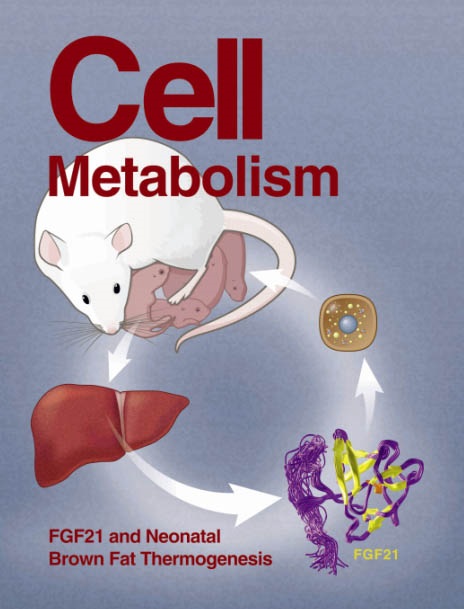Nicotinic acid riboside maintains NAD+ homeostasis and ameliorates aging-associated NAD+ decline
IF 30.9
1区 生物学
Q1 CELL BIOLOGY
引用次数: 0
Abstract
Liver-derived circulating nicotinamide from nicotinamide adenine dinucleotide (NAD+) catabolism primarily feeds systemic organs for NAD+ synthesis. We surprisingly found that, despite blunted hepatic NAD+ and nicotinamide production in liver-specific nicotinamide nucleotide adenylyltransferase 1 (NMNAT1) deletion mice (liver-specific knockout [LKO]), circulating nicotinamide and extra-hepatic organs’ NAD+ are unaffected. Metabolomics reveals a massive accumulation of a novel molecule in the LKO liver, which we identify as nicotinic acid riboside (NaR). We further demonstrate cytosolic 5′-nucleotidase II (NT5C2) as the NaR-producing enzyme. The liver releases NaR to the bloodstream, and kidneys take up NaR to synthesize NAD+ through nicotinamide riboside kinase 1 (NRK1) and replenish circulating nicotinamide. Serum NaR levels decline with aging, whereas oral NaR supplementation in aged mice boosts serum nicotinamide and multi-organ NAD+, including kidneys, and reduces kidney inflammation and albuminuria. Thus, the liver-kidney axis maintains systemic NAD+ homeostasis via circulating NaR, and NaR supplement ameliorates aging-associated NAD+ decline and kidney dysfunction.

烟酸核糖体维持NAD+体内平衡并改善与衰老相关的NAD+下降
由烟酰胺腺嘌呤二核苷酸(NAD+)分解代谢产生的肝源性循环烟酰胺主要供给全身器官进行NAD+合成。我们令人惊讶地发现,尽管肝脏特异性烟酰胺核苷酸腺苷转移酶1 (NMNAT1)缺失小鼠(肝脏特异性敲除[LKO])的肝脏NAD+和烟酰胺产生减弱,但循环烟酰胺和肝外器官的NAD+不受影响。代谢组学揭示了LKO肝脏中大量积累的一种新分子,我们将其确定为烟酸核苷(NaR)。我们进一步证明了胞质5′-核苷酸酶II (NT5C2)是产生na的酶。肝脏将NaR释放到血液中,肾脏吸收NaR通过烟酰胺核苷激酶1 (NRK1)合成NAD+,补充循环中的烟酰胺。血清NaR水平随着年龄的增长而下降,而老年小鼠口服NaR补充可提高血清烟酰胺和多器官NAD+,包括肾脏,并减少肾脏炎症和蛋白尿。因此,肝肾轴通过循环NaR维持全身NAD+稳态,而补充NaR可改善衰老相关的NAD+下降和肾功能障碍。
本文章由计算机程序翻译,如有差异,请以英文原文为准。
求助全文
约1分钟内获得全文
求助全文
来源期刊

Cell metabolism
生物-内分泌学与代谢
CiteScore
48.60
自引率
1.40%
发文量
173
审稿时长
2.5 months
期刊介绍:
Cell Metabolism is a top research journal established in 2005 that focuses on publishing original and impactful papers in the field of metabolic research.It covers a wide range of topics including diabetes, obesity, cardiovascular biology, aging and stress responses, circadian biology, and many others.
Cell Metabolism aims to contribute to the advancement of metabolic research by providing a platform for the publication and dissemination of high-quality research and thought-provoking articles.
 求助内容:
求助内容: 应助结果提醒方式:
应助结果提醒方式:


